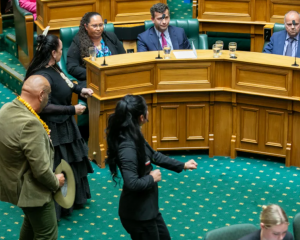The RSA has courted controversy this week by entering the campaign fighting against proposed changes to the country's flag.
Most criticism is coming with allegations the RSA is interfering with democracy in its opposition to the proposed change, particularly with its comments about the timing of submissions closing on Thursday, April 23, two days before Anzac Day.
The RSA says it feels the closing date is inappropriate, when two days later, New Zealanders will be all standing under the New Zealand flag, as dawn breaks.
The organisation prefers allowing the centenary of Anzac Day to be commemorated without distraction but it has been forced to take action now because of the submission closing date.
There is no doubt the RSA will strongly make its case to keep the current flag, but will other New Zealanders feel so passionate that they too will contribute to the referendum later this year?
Rather than criticise the RSA for making its point firmly, critics should be celebrating the alternative view the RSA is bringing to the debate.
A Bill setting out how the two postal referendums on the New Zealand flag will be conducted passed its first reading in Parliament last month by 76 votes to 43.
Also last month, a committee of four met for the first time in the process of choosing four options for a new flag.
In the first referendum, voters will choose between the four flags and the winning design will be pitted against the present flag in the second referendum.
It is hard to find overwhelming support for this $26 million referendum being championed by Prime Minister John Key and now picked up by his deputy and Finance Minister Bill English.
There are now concerns the flag has become Mr Key's vanity project.
If the flag changes, Mr Key will have a lasting legacy, well away from divisive politics of former prime minister Sir Robert Muldoon, the economic reforms of former finance minister Sir Roger Douglas and the nuclear-free legislation of former prime minister David Lange.
For generations to come, the New Zealand flag, if it changes, will be linked with Mr Key.
The most obvious flag choice for New Zealand is no longer an option because the silver fern on a black background is now considered too close to the flag adopted by the Islamic State murderers and terrorists in the Middle East.
It is perhaps only the silver fern which could excite New Zealanders enough to get involved in the referendum, given its prominence on the uniforms of sporting stars and New Zealand business organisations.
All parliamentary parties except New Zealand First were represented in a cross-party group of MPs to provide input into the development of the Bill, including the voting system and number of alternative flag designs to be included in the first referendum.
With preferential voting, voters can rank the options presented, giving people more opportunity to indicate their preferences among the alternative flag.
Mr English is encouraging people to vote in the first referendum, even if they support the current flag, saying it allows voters to have a say about which alternative flag they prefer if the flag was to change.
Critics are urging people supporting the current flag not to vote in the first referendum but to come out in force in the second one.
This can be a dangerous tactic, as sometimes the inertia of New Zealand voters plays into the hands of the vocal minority.
New Zealand First leader Winston Peters, who shocked the Government with his win in the Northland by-election, wants the first referendum to simply ask: ''Do you want to change the flag?''
If the majority say no, that should be it. He claims the $26 million being spent on the flag would be better spent reinstating the Gisborne-Napier rail line, double-laning any number of one-way bridges in Northland or funding most of the first year of three free GP visits for over 65s.
Given Mr Key is unlikely to back down on the holding of the binding referendum, it is in the interests of everyone to take part in the process and make a firm and final decision on the future of the flag.












